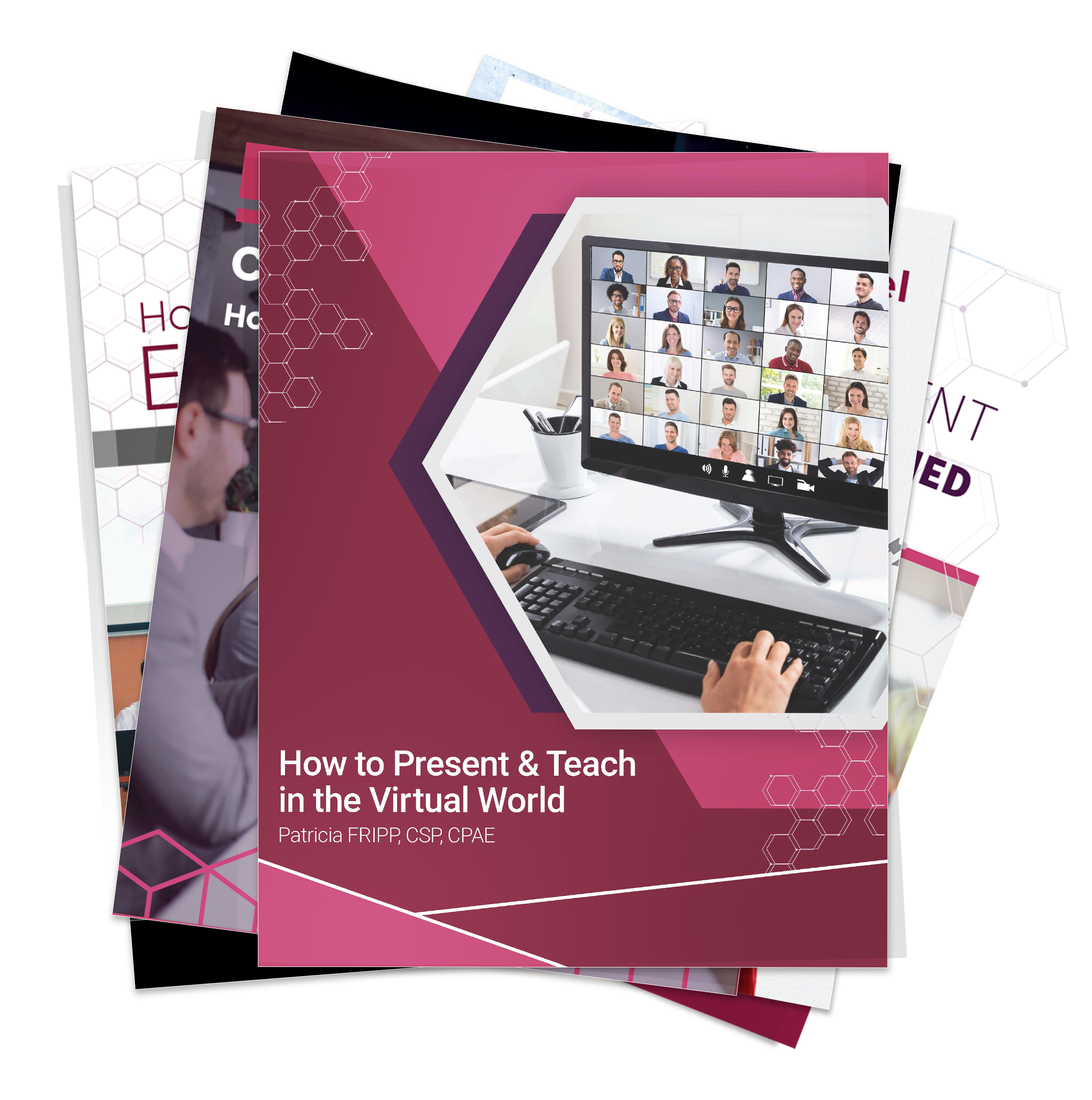Mistakes Speakers Make: You Waste Your Time If You Do This
I’m frequently asked, “What are the mistakes that speakers make?”
One is thinking they have to write out their complete speech.
What I recommend you do instead is follow a logical presentation preparation process.
Think, what is the big idea of your speech, your premise, or your central theme?
What are the talking points? What are the stories and examples you’ll use? Add these ideas to a whiteboard, a flip chart, or a yellow pad. You might come up with some initial scripting for your opening and closing. Next, stand up and talk through the framework of your presentation. Finally, have it transcribed.
Then if you want a script, take it from what you said.
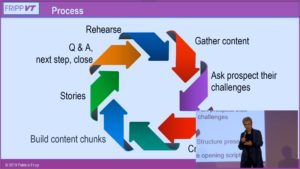
It is difficult to write conversationally. From your conversational script, tighten and clean up what you said. Add specificity. Remove fuzzy language and non-words. When you rehearse, you will find this process will make it much easier to remember.
“FrippVT is an exhilarating way to learn.” –Ursula Bell, Broker, Manion Bell Insurance Brokers
“I am enjoying FrippVT very much! It is a great way to train with master speech coach Patricia Fripp at any time.” –Bill Fleischhauer, Gold Star Father
Read More...Mistakes Speakers Make: This Is an Easy and Fun Strategy
Great Advice…Act As Your Own Warm-Up Act
I’m frequently asked, “Patricia, what are some of the mistakes that many speakers make?” One is not to act as your own warm-up act. Whenever it is appropriate, walk around and speak to the audience before you’re introduced and on stage.
Read More...Want to Know the Secrets to Maximize a Great Marketing Opportunity?

Give a Speech!
Frippicism: People do business with people they know.
Every service club and community group is looking for a free speaker next Thursday at lunchtime. Okay, it could be Wednesday morning at breakfast or even in Zoom. You get the point! If that is you, do not overlook a magnificent marketing opportunity.
Read More...Maximize Your Investment When Booking Speakers
Maximize Your Investment When Booking Speakers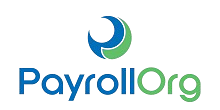
Life would be much easier if you had an unlimited budget to hire the most in-demand keynote speakers and breakout speakers for your next meeting or convention. Since it’s not, here are some tips on getting the most for your meeting dollar.
Let me tell you about a project I worked on with the American Payroll Association (now PayrollOrg) that could be a model for you — or at least expand your thinking about ways to use professional speakers.
PAYO’s Executive Director/CEO, Dan Maddux, had a week of speaking and seminar slots to fill. Instead of assigning each slot to a different speaker, Dan chose to maximize the contribution of a few top people, using three of them in three different ways. That’s how Dan made 1 + 1 + 1 = 9. Three speakers used three ways, which equals nine slots filled. Here’s how such a move can save your organization money and let you “trade up” to speakers you otherwise couldn’t afford.
Save on Hotels and Airfare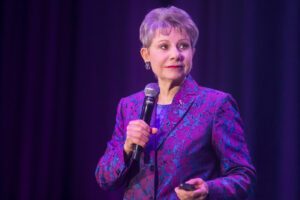
Cutting the number of speakers might or might not reduce the total nights lodging needed, depending on your schedule. However, you’ll definitely save on transportation, for instance, three round-trips versus nine.
Speakers May Reduce Fee
I can’t promise you that all speakers will do extra presentations for the same rates — they won’t. But the speaker you hired last year might have been more flexible if you had only thought to ask, “After your keynote, could you do a breakout session?” Or,” Could you emcee?” “Could you moderate a panel?” Even, “Our chairman is a bit nervous. Could you coach him on speaking?”
Speakers may offer a better price for three consecutive days at one hotel rather than three separate dates months apart.
For example, for the Florida Realtors Association, I asked, “After my luncheon speech, would you like me to do a seminar on speaking skills?” They said, “Well, the agenda is already slotted in, but we’d love it if you would emcee our Top Producers’ panel, the first breakout session after lunch.”
I was scheduled to present a two-hour seminar for the California Interment Association after lunch. I said, “What else is going on? Would you like me to do a spouse program?” They said, “We’ve never had one, but we’ve invited spouses for a breakfast get-together.” I added a 45-minute program that same morning. The only difference was that I had to go to the hotel a few hours earlier. Like most speakers, I want my clients to know I am there to serve them, not to pick up my speaking fee and run.
It’s Easier to Get Sponsors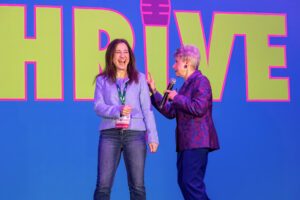
Trading up to big-name (or bigger-name) speakers makes it easier for you to get sponsors. Whenever people say, “We can’t afford you,” I always ask, “Do you have sponsors to help pay for your event?”
Who would sponsor your event? Consider approaching the exhibitors at your conventions, or whoever sells to your members or who wants good PR with the people in the audience. List these “angels” prominently in the program. I always make a point of giving sponsors a suitable plug in my presentations. For example, after my opening story for the American Cemetery Association, I quoted the founder of my corporate sponsor, Service Corporation International. Then I gave examples to reinforce my points by reading from their newsletters, and my walk-away line incorporated their name. I always tell the sponsor, “Don’t worry, they won’t have any doubt who paid for me,” and joke about it in my speech.
Three Invaluable Bonuses
Having speakers on hand throughout your event gives you far greater flexibility in scheduling. Continuity can establish a powerful connection between the audience and the speaker, getting your message across in a way many speakers couldn’t. Dan Maddux says, “We found that when we triple-booked those speakers, they become even more popular, really getting to know our people who always want them to stay around longer.” Continuity, during an event or from year to year, means your speakers can notice and volunteer to help your organization in unique ways you may not have thought of.
How It Works
Recently, 1,674 members of the American Payroll Association attended its Sixteenth Annual Congress in Nashville. Dan chose as keynote speakers Art Linkletter, Susan RoAne, Willy Jolley, Al Walker, and me, Patricia Fripp. He had little trouble getting sponsorship to help pay for these keynoters because of the success of his past conferences.
The Congress was scheduled to start on a Monday. Dan came up with the idea of offering an extra pre-Congress program on Sunday, “For Women Only.” This isn’t as sexist as it may sound because seventy-five per cent of APA’s membership is women. Dan figured that many could take advantage of cheaper Saturday night airline tickets, saving their company’s money, so they might be open to an extra day of education and fun.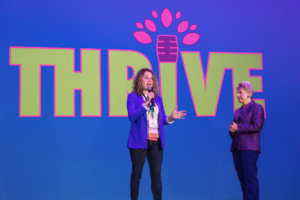
He called this extra program “Women on the Ladder to Success: Career Strategies for the Millennium,” and used six presenters. Three were from within the Association and industry, including the current president. Three professional speakers were also scheduled to speak during the main Congress. Each of the professionals gave two talks at this separate Sunday session. I did “Women in the Workplace, the Evolution of Career Women” and “Are You a Wonder Woman or Superman in Payroll?” (In a custom-made Wonder Woman costume I had made 20 years ago. The fact that I can still wear it deserves applause!) Susan RoAne spoke on “Taking Charge of Your Accomplishments” and “Women Who Make Things Happen: Traits of the Savvy and Successful.” Diane Parente’s programs were “Your Passport to Image Credibility” and “Looking Your Professional Best Without Spending a Fortune.”
Then, at the kick-off Monday session for the entire membership, Susan was the keynote speaker with “Schmooze or Loose: How to Gain the Verbal Edge.” She also presented a program for the vendors, “How to Make the Most of the Trade Show.” Diane Parente delivered a breakout session on “Image, a Powerful Tool,” and gave Dan’s Board of Directors one-on-one consultation as a bonus. (17 in all.) I delivered the Congress’s keynote speech, “Insights into Excellence,” presented a marketing seminar for the vendors, “How to Nurture Relationships Once You Leave the Trade Show,” and, as a break-out, conducted a workshop on “How to Sell Yourself and Your Ideas.”
Having booked the Sunday before the conference, Maddux thought of a way to use his talent pool for a Speakers’ School on Saturday. Last year, this program had been a success, with a smaller audience of their speakers who talked about tax law changes, it had not justified hiring a keynote caliber presenter to teach it.
As I was already going to be there for several days, I was excited about the prospect. I suggested we invite his association members scheduled to give programs during the congress. He also invites the APA leadership from the State chapters who have to speak at their meetings and get no formal public speaking training—the more the merrier. I charge the same whether my audience is five or 5,000. After the session, I helped the President and Woman of the Year rewrite their talks. They have now requested I train them at least 3 months before next year’s convention.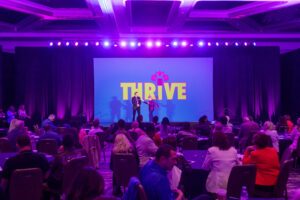
Synergy Makes Good Sense
Dan says, “Using proven professionals in several slots so they develop a rapport with the audience is a better investment than bringing in a different speaker for each slot. In our case, two speakers, Diane and Patricia, had been so successful as keynoters the previous year that the audience looked forward to seeing them again. This gave us the advantage of repeat role models because our presidents turn over every year. The added fact that Patricia, Diane, and Susan had worked together before, and are best friends, gave us even more bang for our buck. We could never have put a dollar value on that kind of synergy.
“I need my speakers to deliver a message and be powerful role models. Patricia, Diane, and Susan are all self-made women over fifty, looking good, feeling good, and they’ve built their careers themselves. This is an important message for our Association audience.”
More Bang for Your Buck
Dan Maddux was able to negotiate with his speakers for many extras. Many professionals figure that their time belongs to the client as long as they are there anyway and are well paid. Therefore, they are happy to take on extra tasks.
The next time you hire a speaker, consider using him or her in multiple ways. It doesn’t hurt to ask if the speaker would be willing to:
- At the same half-day fee, deliver one or two “breakout sessions” or a spouse program along with the keynote.
- Introduce other speakers.
- Emcee the event that they are part of.
- Help the association’s Presidents of the Board of Directors with their presentations in advance or while the speaker is there.
- Say a prayer at a meal. (Where acceptable)
- Moderate a panel.
- Sign autographs.
- Appear in the sponsor’s booth to make their sponsorship an even better investment for them.
Check out Patricia Fripp, the keynote speaker.
“Patricia Fripp is the BEST keynote speaker and investment! She keynoted our major client conference, Meeting Of The Minds, and was a HIT! After her opening keynote, she conducted HALF of the ten best break-out sessions. Based on this incredible feedback, we invited her back the next year for an equally successful repeat performance. We were so impressed by Patricia’s performance that we have engaged her for executive speech coaching and sales presentation skills training.” – Dave Larson, VP, Client Marketing & MOTM Conference Chair, ADP National Account Services.
Read More...Mistakes Speakers Make: Being a Good Speaker Doesn’t Mean You Can Do This
I’m frequently asked, “What mistakes do most speakers make?”
One mistake is thinking that because you are a seasoned speaker, you can wing it.
I am not saying your presentation won’t be good, but how do you know if your timing is right if you aren’t prepared?
How do you know if your points are clear, well-developed, and obvious to your audience
Read More...How to Improve Your Sales Presentations: FrippVT Sales Sampler
How much time do you invest in improving your sales presentations?
Sales presentation skills expert Patricia Fripp has provided a sales sampler from her FrippVT.com web-based training. Enjoy!
“Back in 2018, we invited you to help us with an important sales presentation, which we won. You will be as excited to know, that it continues to reap dividends! Last year, we were awarded $1.6 million in business with them. We just received a $2.8 million order from them already this year and it is still January. Your advice and coaching are awesome. What an ROI!” Michael E. Stryczek, President & CEO, AB&R® (American Barcode and RFID)
Take advantage of my Special Report on The 11 Mistakes Sales Professionals Make in Their Presentations.
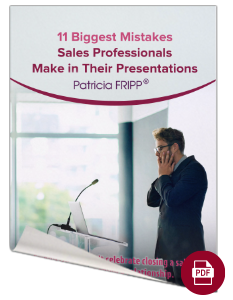
Powerful Presentations Must Make an Emotional Connection with Your Audience – Learn How
To win over your audience, you must connect emotionally.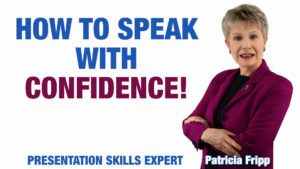
With well-chosen words, you can open your presentation and establish an immediate emotional bond. As a presentation skills coach, when I work with a group, I’ll invite individuals to come to the front and deliver their opening lines. On one occasion, up walked Stephen. He began to tell the facts of his experience of living with deafness since birth. After he spoke, the audience was sympathetic; however, he had not made a connection. He was also missing an opportunity.
I took him aside and suggested he try a different approach. Stephen spoke again saying, “Imagine how my parents felt as the doctor walked into the waiting room and said, ‘I am so sorry to tell you this, but your beautiful boy is deaf.’” He painted a vivid picture of this pivotal moment in his parents’ lives. Whether or not audience members were parents themselves, they were able to emotionally connect with the situation. You could feel a change in the room.
You have many theatrical choices in how you open your presentation.
Read More...Don’t Waste Words and an Amazing Opportunity When You Open Your Presentation
When you open your presentation, you have just thirty seconds to command your audience’s attention.
Don’t waste your opening words. Prepare a winning opening and give it extra attention as you rehearse your presentation.
A relevant and compelling quote is one way to open a presentation and engage your audience. General Eisenhower said, “Leadership is the ability to decide what has to be done and then to get people to want to do it.” When I talk on leadership, I often begin with that quote. I’m also a believer in quoting others besides dead white men––although many of them have made wonderful, inspiring, and educational comments.
Consider quoting live individuals. When I’m talking about getting and keeping customers, I say, “As Bill Gates said, ‘When you lose a customer, you lose two ways. First, you don’t get their money. And second, your competitor does.’” I pantomime stabbing myself in the heart, which usually gets a laugh.
Quotes can be both informative and surprising.
As the great philosopher, Raquel Welch said, “Style is being yourself, but on purpose.”
I add, “Every time you stand up to address an audience, you have to be yourself, but slightly larger than life. In other words, on purpose.”
Relate to your audience.
A great source for quotes is the very audience you are addressing or people they are familiar with.
At a four-day Texas Instruments conference, I told the audience, “I’m here to tell you how to future-proof your careers.” Two days earlier, I had heard their chairman use the phrase “future-proof” when discussing their strategy and the results they expect for the company.
He said, “Our strategy is to future-proof the shareholders’ investment.” I borrowed his words to connect with the audience, as they were his associates, not investors. The phrase already had the company stamp of approval. What made that engagement a great success was the fact I quoted every single person who had spoken on the program before me over the prior three days.
Any important or recent quote related to the industry or organization you are addressing can get you immediate attention and establish a connection between you and your listeners. I often quote something from my client’s most recent corporate report.
Clients tell me, “We’re so glad you quoted our chairman. We always send the report to our associates, and we don’t think they ever read it.”
Interesting quotes can be used throughout your talk.
Unfortunately, speakers often go with predictable quotes from sports stars, writers, texts, and celebrities. Don’t bore your audience with familiar and tired quotes.
Get creative. Get ready to take notes. Make a list from your own sources as you ask yourself, “What quote, memorable saying, keen insight, or witticism can I take from…”
My father, mother, siblings, grandmother, grandfather?
My teacher or coach?
My first boss or manager who inspired me?
My successful or even brilliant clients?
Myself?!!
Here are some of my responses to this exercise that you may use if you like––just give me credit!
From my father, A. H. Fripp:
“Don’t concentrate on making a lot of money, but rather concentrate on becoming the type of person people want to do business with, and you most likely will make a lot of money.”
From my mother, Edie Fripp:
“Of course, it is the inner you that counts, but dress up and look good so you can attract people so they can find out how nice you are, how smart you are, and how valuable you can be to them.”
From my brother, the legendary guitarist, Robert Fripp:
“Discipline is not an end in itself, but a means to an end.”
From my client, the brilliant businessman, Manny Lozano:
“Keep promoting––even when your appointment calendar is full. You need to resell to the clients you already have that this is still the place they want to come.”
A personal favorite from Jerry Seinfeld:
“I will spend an hour editing an eight-word sentence into five.”
From me, Patricia Fripp:
“All I ever wanted in business is an unfair advantage.”
“Don’t celebrate closing a sale, celebrate opening a relationship.”
“The answer is no if you don’t ask.”
When your quotes are new to your audience, your entire message will sound fresh and original.
For hundreds of Patricia Fripp and family Frippicisms that you can use in your speeches, articles, PowerPoint, and tweets––as long as full credit is given. www.fripp.com/about-patricia-fripp/frippicisms/
FrippVT is a state-of-the-art, web-based training platform that emulates live training and coaching. It is almost as if Presentation Expert and Executive Speech Coach Patricia Fripp is sitting in front of you. FrippVT is designed to be immediately engaging and makes it fun to learn. If you are a novice presenter or a seasoned professional, you will find the content both practical and relevant.
Sign up for your complimentary trial and discover how FrippVT can transform you and your team. Take advantage of your free trial. www.FrippVT.com
Executive Speech Coach and Hall of Fame Keynote Speaker Patricia Fripp works with individuals and companies who realize that powerful, persuasive presentation skills give them a competitive edge.
Enjoy this segment from FrippVT online learning platform.
Would You Like to Know the Answers to Be Able to Deliver Memorable Messages?
Shep Hyken is the host of Be Amazing Or Go Home. Enjoy his interview with Patricia Fripp.
Memorable messages are now more important than ever, especially in today’s virtual world. What techniques can lead you to the results that you want? Patricia Fripp is one of the world’s foremost speech coaches working with executives from the Fortune 100 and the top professional speakers on how to make more powerful presentations, and Patricia joins us now in the studio to talk about how to get amazing results from your next presentation. Welcome to Be Amazing Or Go Home.
Shep Hyken: I’ve got a number of questions, first of all, yes, you are the speech coach to the stars, both in the corporate world as well as the professional speaking world. Hall of Fame speakers, speakers that have won awards have come to you to get their coaching, … including myself, I’m a proud client. I hope I’ve done you good service. Let’s begin with this.
